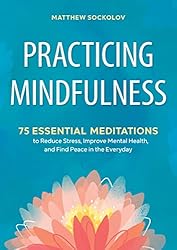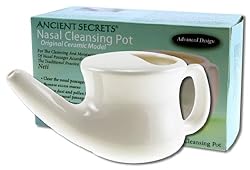Have you ever wondered where did they get these crazy colorful taste descriptions in gourmet product reviews? Wine with notes of leather and wet gravel? Yerba mate that tastes like cookie dough and prunes? Doesn’t wine just taste like grapes, and yerba mate taste like dry herb? It’s perfectly fine if all yerba mates taste the same to you, especially in the beginning of your journey, but mate is such a beautifully complex drink that if you develop the palate for it, I can guarantee that your enjoyment and appreciation of this fine herb will skyrocket! Let me share some of my insights that may help you become a yerba mate super taster and prove to yourself how diverse the taste of mate can be.
My mate journey
It’s no secret that I hated my first sip of mate many years ago. But so did I hate my first sip of wine, beer, whiskey and coffee. I was reading reviews of these products, puzzled by how can all these people taste so many nuanced and deliciously sounding notes in what seemed to be a bitter and disgusting drink. I thought that something is wrong with me. The only thing that kept me sticking to it is seeing how passionate are people about these products and how much they are enjoying it. I didn’t realize that yerba mate, as well as other complex foods and drinks, has an acquired taste, so the more I experimented with different gourmet things, the more sensitive my palate has become over time. At one point I caught myself thinking that I am really enjoying drinking mate, which led me to contemplate about how does the taste work and how we can improve it in order to start enjoying our foods and drinks more.
Mechanics of tasting
In order to understand why some people can taste things that other people can’t, we first need to understand how do we actually taste foods and drinks.
When you put something in the mouth, the first thing that it encounters is tongue. The surface of the tongue is covered by taste buds, which in turn contains the taste receptor cells, also known as gustatory cells, that are responsible for the sense of taste. When food or drink is mixed with saliva, it reacts chemically with taste receptor cells that then send the information to the brain. Humans have from 2000 to 8000 taste buds, where each taste bud contains 50 to 100 taste receptor cells, so there can be a huge difference in the quantity of taste receptor cells between different people. The more taste receptor cells you have, the sharper is your sense of taste.
Fun fact: women are twice as likely as men to be on a higher end of that spectrum! Also people native to Asia, South America and Africa on average have higher quantity of taste receptor cells than people native to Europe.
It’s not the end of the world though if you have a lower quantity of taste receptor cells. First off, it’s not necessarily a boon — for a person with more than average amount of gustatory cells a slightly spicy food may be too spicy; a hoppy beer may be too bitter; a bold Uruguayan yerba mate may be too overwhelming and strong. Second, taste buds are mostly responsible for five primary tastes, such as sweet, sour, bitter, salty and umami, as well as the texture and the temperature of the food or drink. So don’t bother counting taste buds on your tongue — especially since there is another sensory system that plays a much more important role in the mechanics of tasting.
Have you ever noticed that when you have a stuffy nose your food and drinks taste super bland, almost to the point of being completely flavorless? That’s because most of the taste of the food that you eat and beverages that you drink actually comes from the sense of smell! Nasal and oral cavities are interconnected, so all the vapors and volatile particles from foods and drinks in your mouth are registered by the olfactory receptors via what is known as a retronasal olfaction, or simply a smell from inside the mouth, which gives a perception as if you taste it with your tongue. So the flavors that you sense when taking a sip of yerba mate or any other food or drink are in reality just smells! For instance, we cannot actually taste the cookie dough, so when I say that yerba mate tastes like cookie dough, technically it means that when dry yerba mate reacts with water and saliva in my mouth, I retroactively smell the cookie dough.
The final destination of neural impulses from olfactory receptor cells is the brain. The neural signal is transmitted to the olfactory bulb — a part of forebrain responsible for the sense of smell — which then sends olfactory information to be further processed by parts of the brain responsible for smell identification, memory, and emotion. And here’s the kicker — in order for your brain to be able to distinguish the flavor and smell notes, it needs some sort of reference point. In other words, your brain will try to match the flavors you are experiencing with those that you have already tried, labeled and stored in your memory. Think about it — how can you say that something tastes like strawberry when you never tasted a strawberry before in your life?
With all that in mind, let’s finally talk about the practical steps to improving your sense of smell and taste.

Tips for improving your palate
Try new foods and drinks
This is the most obvious thing that you probably already concluded yourself. You need to fill up that dictionary in your brain if you want to distinguish nuanced flavors!
- Travel to other countries, eat local food there.
- Explore new cafés and restaurants in the area where you live, especially ones with foreign cuisine. Always order something new that you haven’t tried before.
- Learn how to cook and experiment with new recipes or try new exotic ingredients in your favorite dishes, experiment with different spices.
- Develop a preference for complex foods, like aged cheeses, cured meats and fermented vegetables.
- If your budget allows it, try complex wines and whiskeys (although don’t go overboard with alcohol!).
- And of course drink mate daily! Try different brands and regional types, but don’t get stuck on just yerba mate — enjoy teas and coffees as well.
Develop mindfulness
It’s hard to pick up flavor notes when you are constantly daydreaming. You also need to be present in the moment in order to memorize and label smells that you encounter everywhere.
- Build a meditation habit, it will help you in many more aspects of your life rather than just tasting foods and drinks.
- Improve your concentration and focus — to our luck, drinking mate daily is the best way to do so!
- Go on mindful walks around your neighborhood, pay attention to the smell of the ordinary day-to-day things, such as grass, asphalt, plastic in your car and leather in your clothes.
Practicing Mindfulness: 75 Essential Meditations to Reduce Stress, Improve Mental Health, and Find Peace in the Everyday
Available on Amazon
North America and Europe shipping. Amazon Prime available.
Check PriceLearn more about the taste of yerba mate
I have an article that explains in details what flavors you can expect from an average yerba mate, how it differs to tea and coffee and what are their similarities.
- Learn what affects the taste of yerba mate.
- Read about differences between regional types of yerba mate.
- Learn how to acquire the taste of yerba mate.
- Use Matexperience reviews as your guide, but also check out other great reviewers — Yerba Mate Lab and Circle of Drink.
Take care of your nose and sinuses
Since nose plays the most important role in the tasting of foods and drinks, nasal health is crucial and should be a top priority.
- Blow your nose regularly.
- Don’t sit all day at home, go outside — fresh air and sunshine are the nature’s antibiotics.
- Eat well and exercise — the stronger your immune system is, the lower is the risk of getting a sinus infection.
- Rinse the nasal passages with saline solution. I use neti pot with 1/2 tsp of sodium and 3/4 tsp of pink Himalayan salt dissolved in 200ml of lukewarm water twice a day.
Ceramic Neti Pot
Available on Amazon
North America and Europe shipping. Amazon Prime available.
Check PriceUse flavor wheel as your cheat sheet
Even if you acquired the taste of yerba mate and tried many other different foods, drinks and spices, it still can be quite hard to instantly come up with a precise flavor description. Flavor wheels are a perfect tools for that. They are represented by a sunburst chart with more generic flavors in the middle of the circle that are getting more specific closer to the edge. There are multiple different flavor wheels available at our disposal, including coffee and wine tasting wheels. I like to use this interactive flavor wheel comparison tool — pick the one that you find most logical and comfortable to you.
Next steps
If you take your time and execute on those tips I can guarantee you that your palate will improve by leaps and bounds! You will start to enjoy yerba mate even more, while also growing yourself as a human and developing a better appreciation for finer things in life.
As a first step in that direction I suggest you do the following — pick a yerba mate from the ones that I already reviewed, choose one that sounds the most interesting and delicious to you. Get it, try it, take notes and compare it with the review. Do not fret if you don’t taste all the flavors described in the review — drink it couple more times and set it aside for a few months. Do all the above — try other yerbas, taste new foods and drinks, start meditating, explore new places, different cultures and their cuisines, and then return to the yerba mate that you started with. Try it again, take notes and compare them with your previous experience as well as the review. Notice any difference. Have you started to taste new flavors? Or maybe you even started to get other notes that were not present in the review? Go ahead and share it then in the comments! Every insight is helpful, and together we can build a complete and abundant profile of every yerba mate.
***
Do you consider yerba mate gourmet? Have you noticed that your palate improved after drinking yerba mate? How important for you are nuanced flavor notes in mate, or you do not care about them at all? We would love to read about it in the comments.
Mate
Yerba mate





